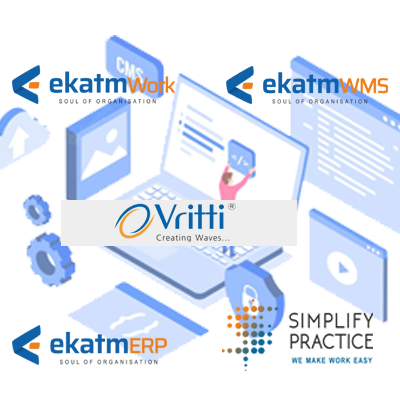The WMS programs of a decade ago were once rigidly compartmentalized and relegated to a specific industry or vertical.
Effective warehouse management is more than simple data. It’s a staging ground for a robust and customized set of solutions for your workflows. It ties together teams beyond your warehouse walls, looping in sales, engineering, IT, and more to create transparency and cooperation across the board. Vritti Solutions is a Pune based software company who provide best quality of warehouse management software in Mumbai, Pune, Delhi, Bangalore etc.
Your WMS means more than hitting a key to determine where materials are stored––it’s about building and shepherding the processes that get them there.
And today, you have many integration-friendly, scalable options for a WMS that are capable of the evolution you’ll need as a modern business.
Benefits of WMS for Future Ready Enterprises.
1: Reduced Operating Expenses
A well-designed WMS reduces operating expenses in a variety of ways. This type of system determines the most effective use of both labor and space, which reduces waste. WMS software can help you determine where to keep certain materials, products and equipment to optimize the flow of your warehouse. Some advanced systems have warehouse floor simulators, enabling users to create potential floor plans within the system.
2: Enhanced Inventory Visibility
Inventory visibility is one of the most important components of warehouse management systems. WMS software provides real-time data on your inventory through barcoding, serial numbers and RFID tagging. All of these methods enable users to document each item as it enters the warehouse, all of its movements on the warehouse floor as well as its movement during transportation from one location to the next.
WMS solutions allow users to track inventory within a single warehouse or multiple locations
This type of visibility is necessary to create demand forecasts, which provide insight into which products are most popular with customers during specific times of the year. These forecasts assist leadership in deciding which products to invest in and which ones may be losing their place in the market. Traceability ensures you only have to recall damaged goods, rather than any and all goods you suspect are tainted.
3: Just-in-Time Inventory
Another benefit of a warehouse management system is Just-in-time (JIT) which refers to an inventory management practice in which stock levels are kept low and product moves quickly through the warehouse. Rather than holding onto inventory for long periods of time, your warehouse receives it “just in time” to fill an order. While this process can be quite complex, achieving a balanced, just-in-time inventory is a breeze with the right warehouse management program.
A WMS provides forecasts which are used to generate optimal inventory levels to meet demand without underestimating or exceeding it. This greatly reduces safety stock and related carrying costs. If your materials are used in manufacturing, just-in-time warehousing can also reduce waste and scrap related to perishable items.
4: Continuous Improvement
One of the most important warehouse management system benefits is consistent updates. Warehouse management software vendors typically introduce new features regularly to reflect current industry best practices. This makes it easier for organizations to stay on top of the latest developments and allows them to continually improve their processes based on these innovations.
With cloud WMS, continuous improvement is even easier. Updates and new features can be added to the system automatically, reducing the need for in-house IT staff. But businesses using an on-premise system may or may not receive regular updates from their vendors, depending on the terms of their contract. This is yet another example of why many buyers are moving to the cloud.
Compare Top Warehouse Management Systems Software Leaders
Enhanced Security
Most warehouse management programs require employees to use individual user accounts when entering transactions. This creates an audit trail that connects specific employees to specific transactions, which improves accountability and reduces the risk of theft and other issues. It also allows employers to identify new training opportunities and other ways to improve employee practices.
Additionally, user-based access levels prevent unauthorized access to certain reports and analysis. This only allows each user to see as much information as is necessary for their work. This way, with a robust WMS you don’t have to worry as much about company secrets and losing your competitive advantage.
Conclusion
If you’re small- to medium-size company is looking to grow, then 2019 is the year you need to embrace WMS and learn ways to have an uptick in profits.
<!– 1545200647629 –>








